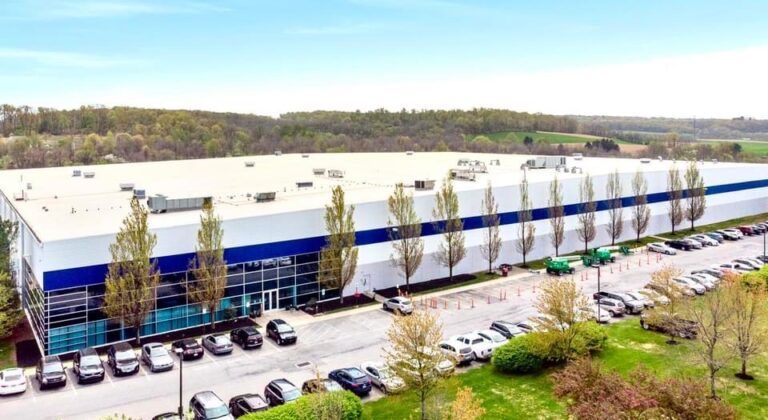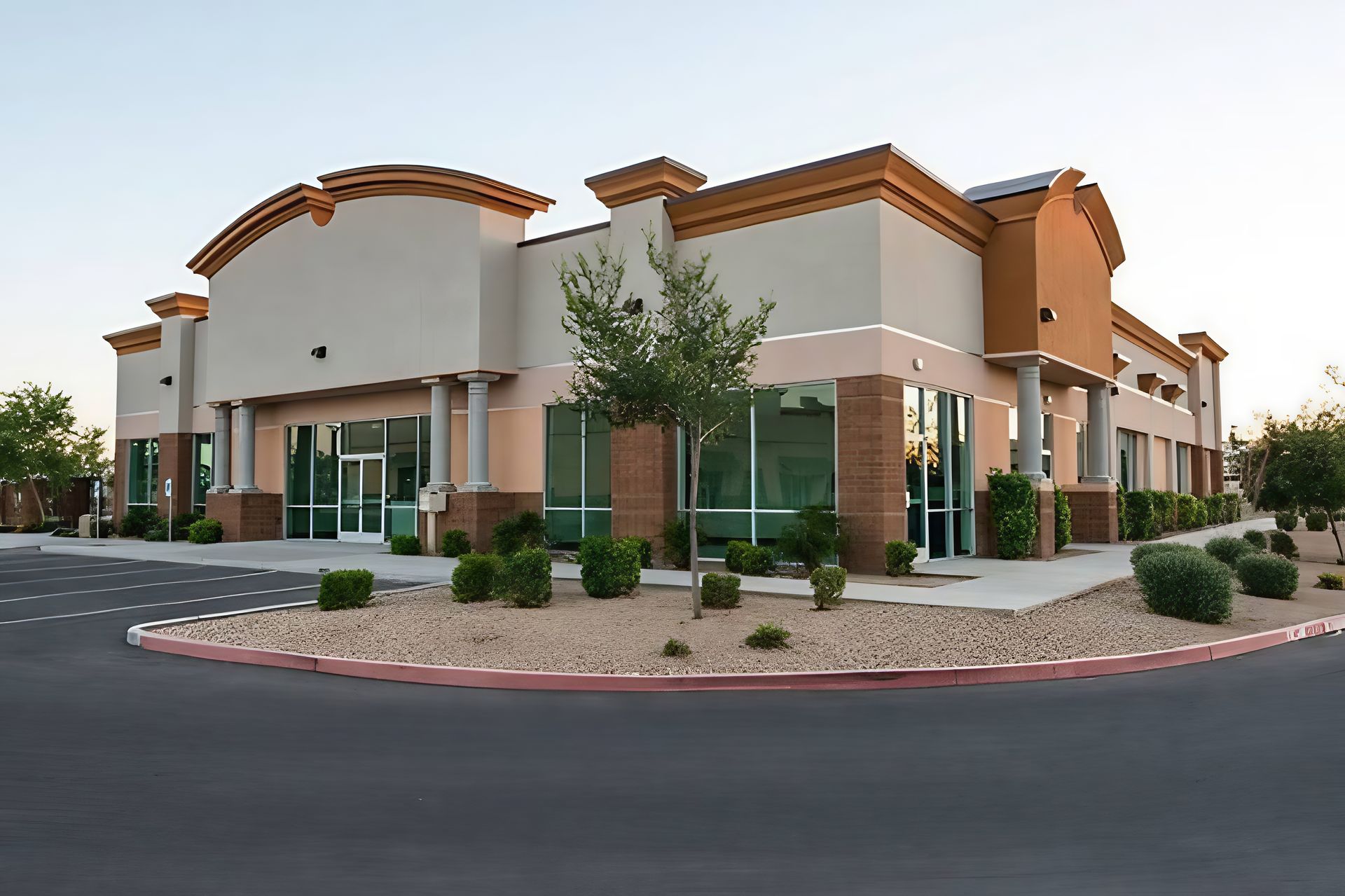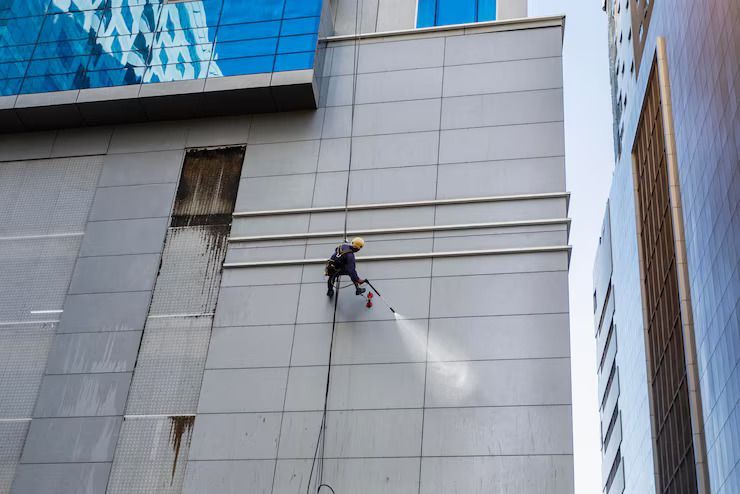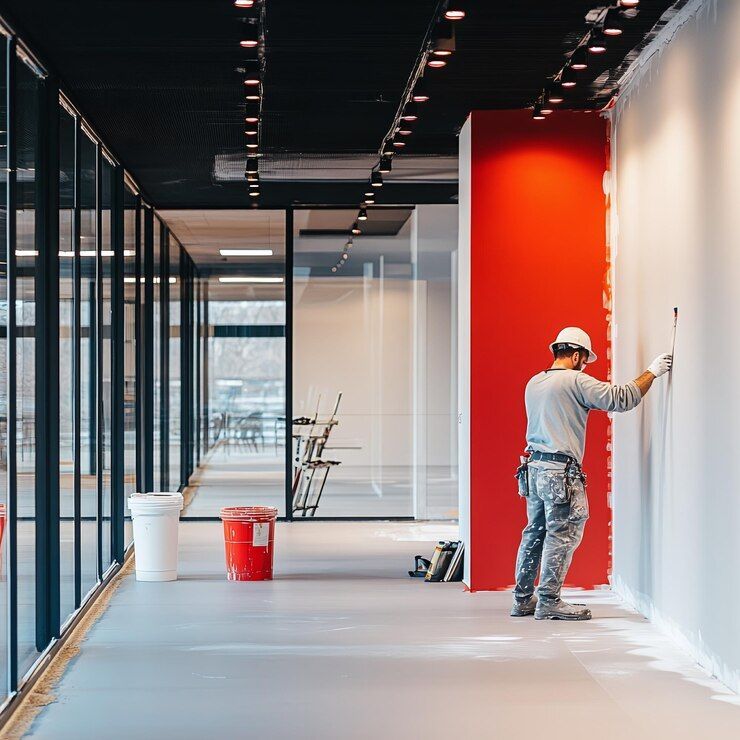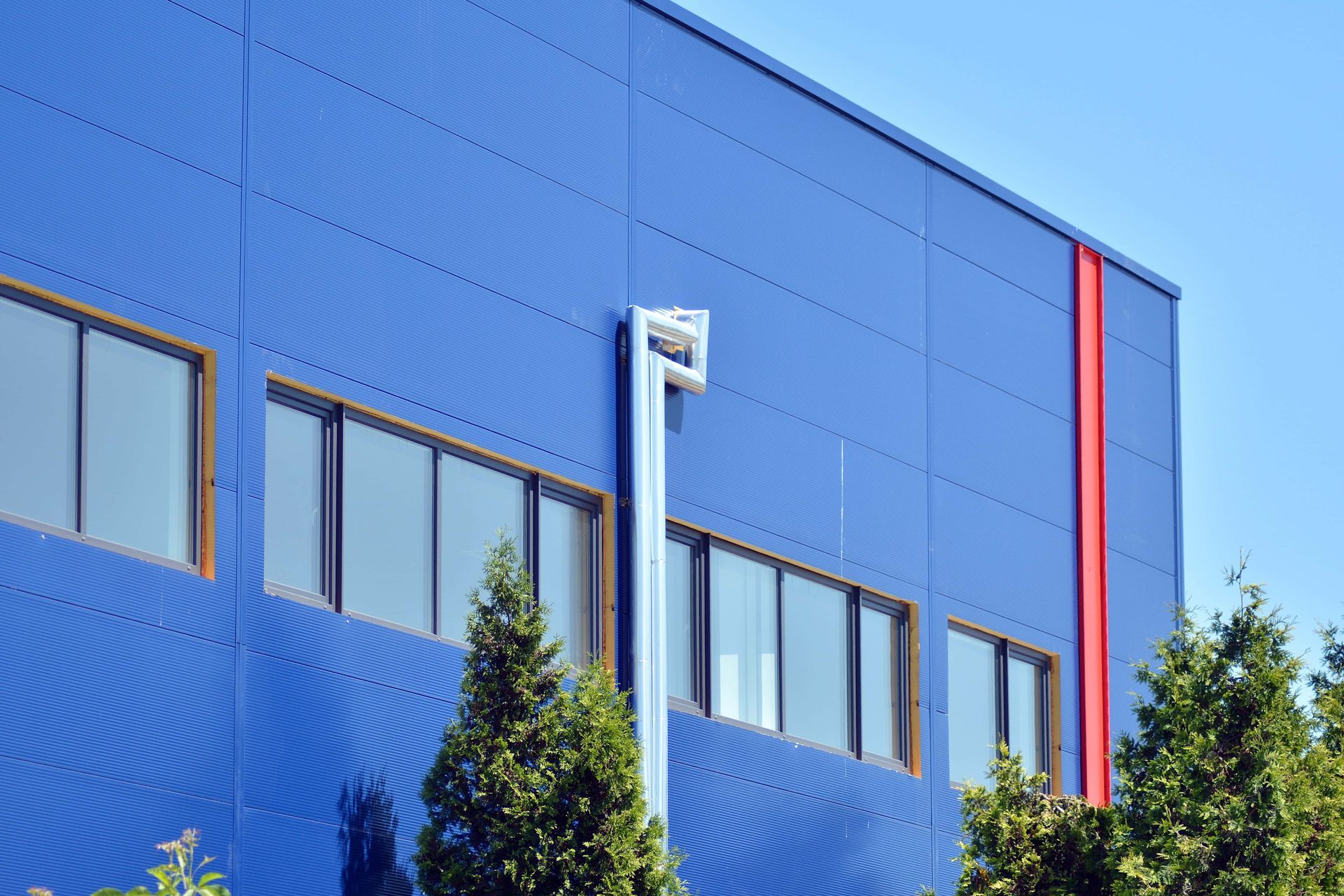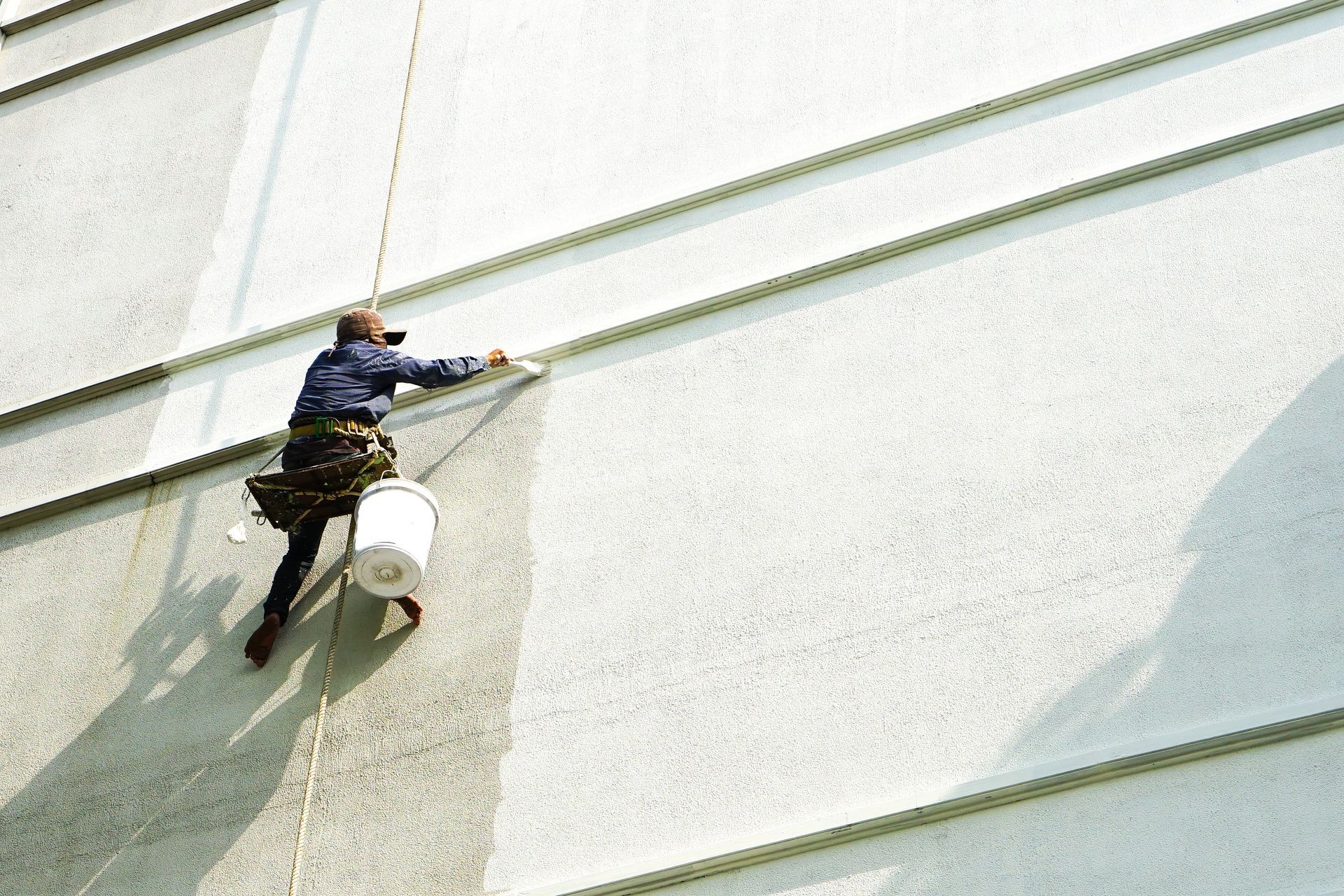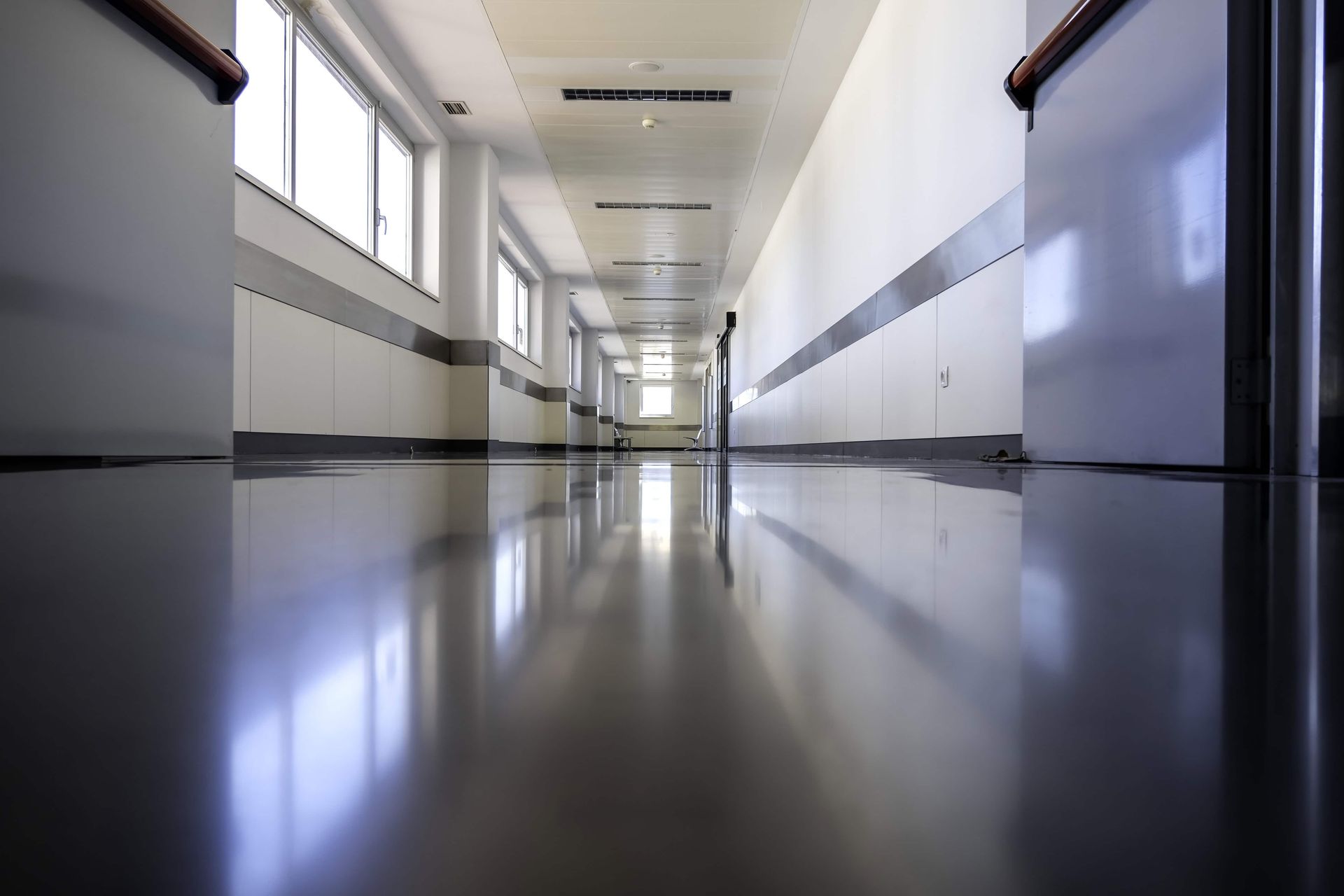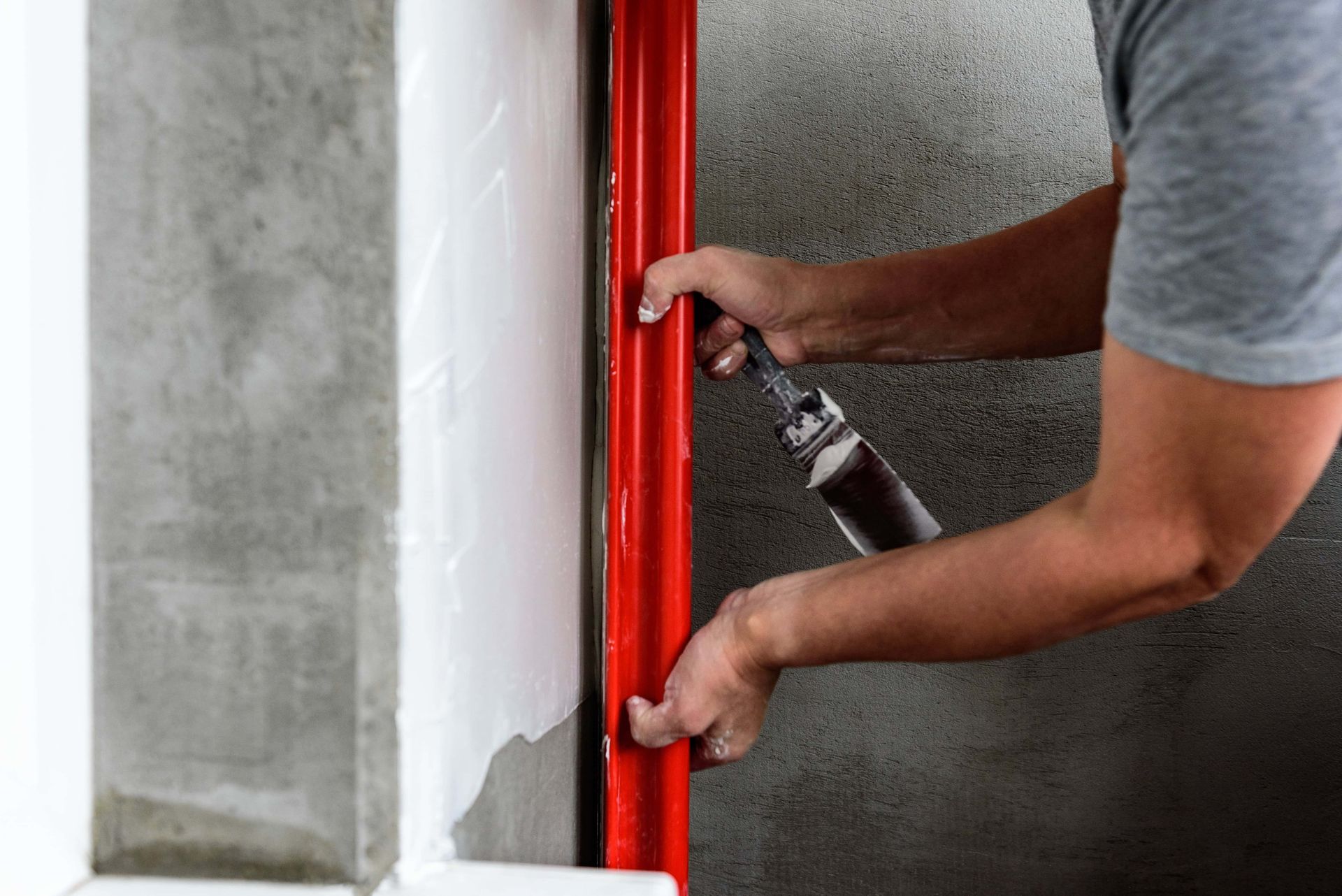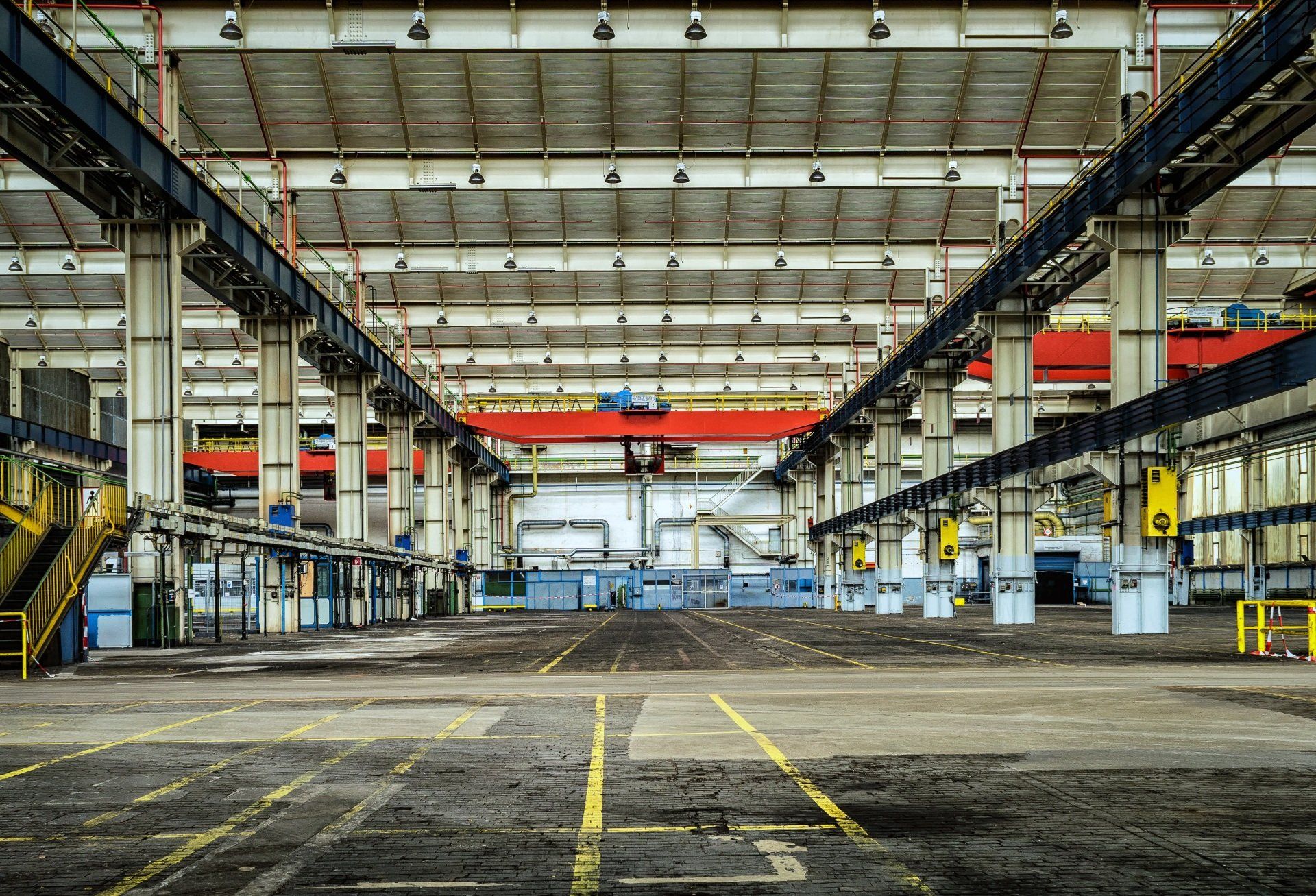Campus Aesthetics and Performance: Strategic Painting Solutions for Educational Facilities
Key Takeaways
- Impact on Learning: Research shows properly designed color schemes can improve student concentration by up to 12% and reduce visual fatigue in learning environments.
- Maintenance Efficiency: Planned painting programs for educational facilities reduce annual maintenance costs by 15-25% compared to reactive approaches.
- Health and Safety: Low-VOC and zero-VOC paint systems create healthier indoor air quality while performance coatings can reduce bacteria and virus survival on high-touch surfaces.
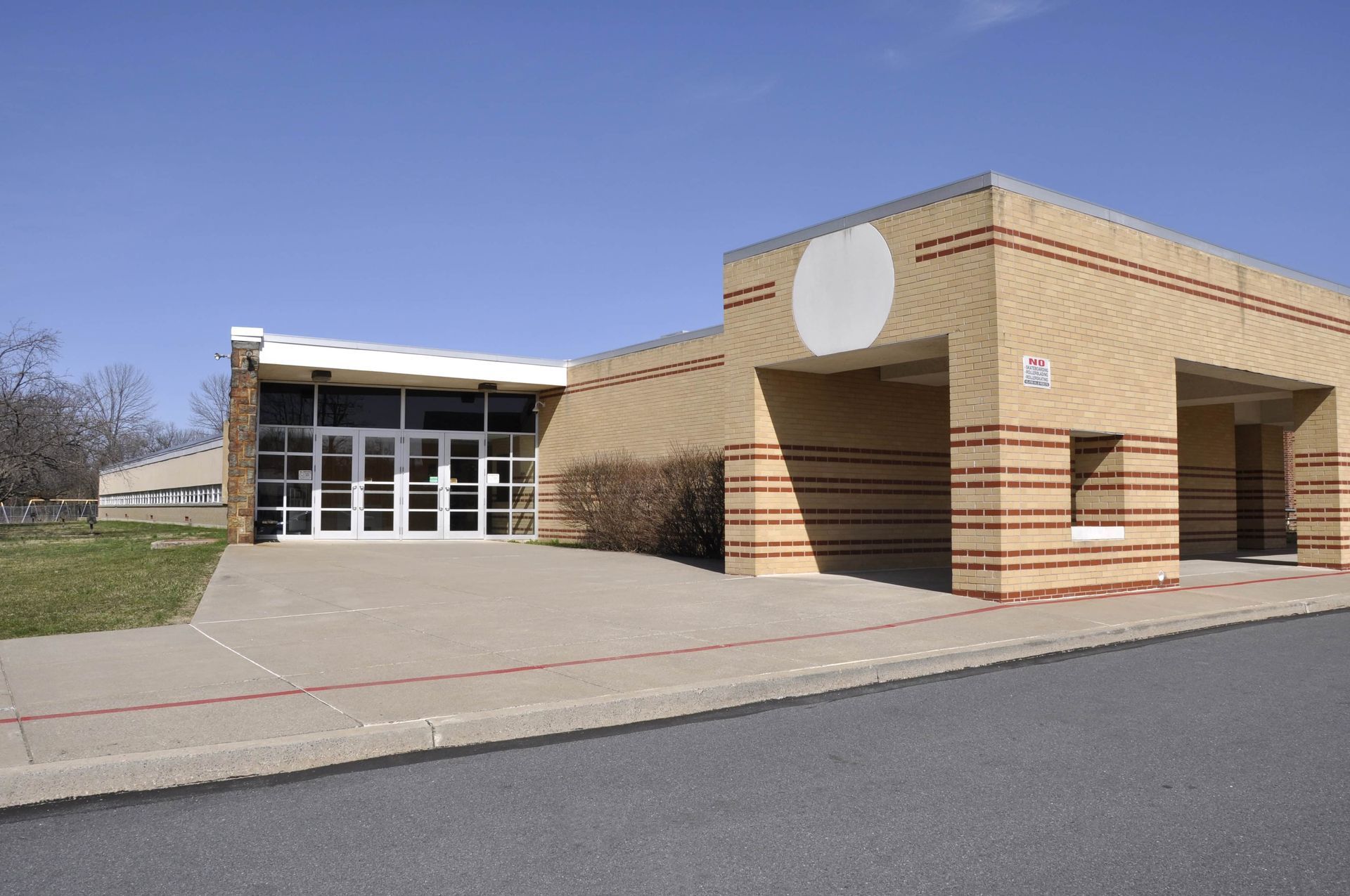
Educational facilities face unique challenges when it comes to maintaining building interiors and exteriors. From elementary schools to universities, these environments experience heavy traffic, constant use, and must serve diverse functions—all while operating under tight budgets and limited maintenance windows.
Strategic painting solutions offer educational facilities more than just refreshed appearances. When approached thoughtfully, painting programs can enhance learning environments, improve maintenance efficiency, reduce long-term costs, and even contribute to student and staff wellbeing.
Beyond Aesthetics: How Paint Affects Learning
Environments
Color psychology has been extensively studied in educational settings, and the evidence is clear: the colors surrounding students impact their learning experience.
The Cognitive Impact of Color
Research into environmental psychology shows that color choices in classrooms and study areas can:
- Influence attention spans and focus
- Affect perceived time passage
- Impact stress and anxiety levels
- Enhance or inhibit information retention
- Change energy levels and mood
For example, studies have found that:
- Blues and greens tend to create calming environments conducive to focused study
- Warm colors like yellows and oranges can stimulate creativity and collaboration
- Overly bright or intense colors can increase distraction and restlessness
- Monotone environments may increase boredom and reduce engagement
These findings suggest that selecting colors should be a strategic decision rather than merely an aesthetic one.
Age-Appropriate Color Selection
Different age groups respond differently to color environments:
Elementary Schools:
- Younger children generally respond well to brighter, more vibrant colors
- Color can be used effectively as a wayfinding tool for younger students
- Different color zones help create distinct learning areas
- Warmer colors often work well in early education spaces
Middle and High Schools:
- More sophisticated color schemes with moderate tones
- Strategic use of school colors to build identity and pride
- Color zoning to differentiate academic, athletic, and social areas
- Calming colors in high-stress areas like testing rooms
Higher Education:
- Professional environments with selective accent colors
- Department-specific color schemes that reflect subject matter
- Colors that reduce eye strain in study-intensive areas
- Traditional colors in historic buildings to maintain campus aesthetics
Functional Color Strategies
Beyond psychological impact, color serves practical functions in educational settings:
Wayfinding and Navigation:
- Color-coded hallways and wings help students navigate large campuses
- Consistent color schemes for certain types of rooms (e.g., science labs, art studios)
- Distinctive colors at key decision points to aid navigation
- Color gradients to indicate progression (particularly helpful in elementary schools)
Activity Zoning:
- Different colors to signal quiet study vs. collaborative spaces
- Color transitions to indicate moving from academic to recreational areas
- Distinctive treatments for administrative vs. student areas
- Strategic color to highlight important safety features
Performance Coatings for Educational Environments
Modern paint technologies offer more than just color—they provide functional benefits especially valuable in demanding
educational settings.
Durability Solutions
Educational facilities face constant wear and tear. Performance coatings designed specifically for these environments offer:
High-Traffic Area Protection:
- Corridor and stairwell coatings that resist scuffing and abrasion
- Washable, burnish-resistant formulations that maintain appearance longer
- Impact-resistant finishes for areas with frequent contact
- Textured coatings to hide minor wall damage and imperfections
Specialty Surface Protection:
- Marker board coatings that create writable/erasable surfaces
- Anti-graffiti finishes for exterior and bathroom areas
- Gymnasium and athletic area coatings designed for frequent cleaning
- Floor coatings that withstand heavy foot traffic and rolling loads
Health and Safety Benefits
Modern coating systems can contribute to healthier learning environments:
Indoor Air Quality:
- Zero-VOC and low-VOC formulations reduce respiratory irritants
- GREENGUARD certified products for sensitive populations
- Asthma & allergy friendly coatings for younger student environments
- Odor-reducing technologies for quick reoccupancy after painting
Antimicrobial Options:
- Coatings with antimicrobial additives for high-touch surfaces
- Easier-to-clean surfaces in health service areas and food service spaces
- Mold and mildew resistant formulations for humid areas like locker rooms
- Specially formulated products for healthcare training facilities
Safety Enhancement:
- High-visibility colors for safety zones
- Reflective coatings for improved lighting efficiency and safety
- Non-slip additives for floor coatings in potentially wet areas
- Fire-retardant coatings for certain specialized applications
Strategic Maintenance Scheduling for Educational Facilities
One of the biggest challenges for educational facilities is finding time for maintenance. Strategic painting programs address this challenge through careful planning and prioritization.
Academic Calendar Integration
Smart scheduling works around the natural rhythms of the academic year:
Summer Programs:
- Comprehensive projects during extended summer breaks
- Major color changes and significant repairs
- Coordinated with other renovation work for efficiency
- Complete classroom refreshes and exterior projects
Break Period Projects:
- Quick-turnaround projects during spring/winter breaks
- Touch-ups and minor repairs
- High-priority common areas
- Fast-drying product selection for tight timelines
Weekend/Evening Work:
- Limited-scope projects during off-hours
- Focus on self-contained areas
- Low-odor product selection when quick reoccupancy is needed
- Careful containment to prevent disruption to adjacent spaces
Zone-Based Maintenance Approach
Rather than tackling entire buildings simultaneously, a zone approach often works better:
Rotating Schedules:
- Dividing campuses into maintenance zones
- Creating 3-5 year rotation schedules for comprehensive painting
- Prioritizing zones based on condition, visibility, and usage
- Maintaining consistent standards across all zones
Need-Based Prioritization:
- Assessment-driven maintenance planning
- Addressing high-visibility areas more frequently
- Aligning with other planned renovations and upgrades
- Responding to usage pattern changes
Documentation and Planning
Successful educational painting programs rely on solid documentation:
Paint Schedules:
- Detailed records of all paints and colors used
- Location-specific product specifications
- Touch-up instructions for maintenance staff
- Supplier information for consistent matching
Performance Tracking:
- Regular condition assessments
- Documentation of wear patterns
- Tracking of problem areas requiring more frequent attention
- Cost analysis to optimize maintenance intervals
Balancing Performance and Budget Constraints
Educational facilities typically operate under strict budget limitations. Smart painting strategies help maximize value within these constraints.
Product Selection Strategy
Not all areas require the same level of performance:
Tiered Approach:
- Premium, high-durability products for high-traffic, high-visibility areas
- Mid-grade products for standard classrooms and offices
- Economy products for storage and rarely-seen areas
- Specialty products only where their performance benefits justify the cost
Longevity Focus:
- Investing in better surface preparation to extend coating life
- Selecting products with proven performance in educational settings
- Using primers and surface treatments that address underlying issues
- Specifying washable finishes that reduce repainting frequency
Contractor Partnership Benefits
Working with experienced educational facility painters provides several advantages:
Efficiency Improvements:
- Familiarity with campus layouts and requirements
- Experience working around academic schedules
- Established security protocols and procedures
- Consistent crews who know the institution's expectations
Value-Engineering:
- Recommendations for alternative products with better value
- Identification of areas where repairs may be more cost-effective than replacement
- Maintenance planning to extend life between repaints
- Budget allocation guidance based on condition assessments
Case Studies: Successful Educational Painting Programs
Elementary School Color Zoning Project
A K-5 elementary school implemented a comprehensive color strategy during summer break:
- Color-coded wings by grade level for intuitive navigation
- Calming blue tones in the library and reading areas
- Energetic yellows in collaborative learning spaces
- Distinctive colors at hallway intersections as "landmarks"
- Anti-microbial coatings in high-touch areas
Results:
- 15% reduction in tardy arrivals to class due to improved navigation
- Teachers reported improved student focus in redesigned spaces
- Maintenance costs decreased with more durable, washable finishes
- Positive feedback from parents and improved student pride in the school
University Housing Refresh Program
A large university developed a 4-year rotation for residence hall maintenance:
- One-quarter of housing refreshed each summer
- Standardized, durable products across all buildings
- Coordinated with other maintenance activities (flooring, lighting)
- Color schemes updated to align with current student preferences
Results:
- 22% reduction in annual maintenance painting costs
- Improved housing satisfaction scores in post-occupancy surveys
- More predictable budgeting and resource allocation
- Extended useful life of surfaces between major renovations
Community College Sustainability Initiative
A community college transitioned to a sustainable painting program:
- 100% zero-VOC products for all interior spaces
- Light-reflective colors to reduce lighting energy needs
- Standardized products to simplify maintenance
- Pilot program using recycled paint for selected areas
Results:
- Documented air quality improvements
- 8% reduction in lighting-related energy costs
- Positive public relations and community feedback
- Alignment with institutional sustainability goals
Implementing a Strategic Painting Program for Your Educational Facility
If you're responsible for an educational facility, these steps will help you develop an effective painting strategy:
1. Comprehensive Assessment
Start with a thorough evaluation of your current conditions:
- Document existing colors and conditions
- Identify problem areas and premature failures
- Assess traffic patterns and usage requirements
- Evaluate current maintenance practices and challenges
2. Stakeholder Input
Educational environments serve diverse users whose input is valuable:
- Faculty and staff functional requirements
- Student perspectives (age-appropriate)
- Maintenance team capabilities and constraints
- Administrative priorities and budget parameters
3. Strategic Planning
Develop a plan that addresses both immediate needs and long-term goals:
- Prioritized schedule based on condition and visibility
- Color and product standards documentation
- Budget projections for 3-5 year cycles
- Integration with other facility improvements
4. Implementation Partnerships
Select partners with specific educational facility experience:
- Contractors familiar with academic scheduling constraints
- Product suppliers with education-specific solutions
- Consultants who understand educational environment needs
- Maintenance staff training for ongoing care
Innovative Approaches for Modern Educational Environments
As educational methods evolve, painting and coating solutions are adapting to support new learning models:
Collaborative Learning Spaces
Modern educational design emphasizes flexible, collaborative environments:
- Writable wall surfaces that turn entire walls into brainstorming areas
- Magnetic paint systems that create interactive display surfaces
- Erasable clear coats over colored walls for maximum flexibility
- Defined collaboration zones through strategic color application
Technology Integration
As technology becomes more central to education, supporting solutions include:
- Glare-reducing finishes in areas with digital displays
- Color schemes that complement digital projection
- Distinctive treatments for technology-intensive areas
- Coatings that reduce static electricity around sensitive equipment
Biophilic Design Elements
Research supports connecting educational spaces to nature:
- Nature-inspired color palettes that reduce stress
- Gradated color schemes that mimic natural environments
- Strategic use of greens and blues to improve focus and wellbeing
- Coordination with indoor plants and natural lighting
Conclusion: Painting as a Strategic Asset for Educational Facilities
When approached strategically, painting programs become more than just maintenance—they become investments in educational outcomes, operational efficiency, and facility longevity. By understanding the unique challenges of educational environments, facility managers can implement painting solutions that enhance learning environments while managing costs effectively.
The most successful educational painting programs balance immediate aesthetic needs with long-term performance, creating environments that inspire learning while standing up to the demands of active educational communities.
For educational facilities in Southeast Pennsylvania, PR Commercial Painting offers specialized experience working with schools, colleges, and universities. Our teams understand the unique scheduling, durability, and health requirements of educational
environments and provide tailored solutions that enhance learning spaces while respecting tight budgets and timelines.
PR Commercial Painting provides professional commercial painting services for
educational facilities throughout Southeast Pennsylvania, South Jersey, and North Delaware. Contact us today at 610-232-7332 to discuss how our education-focused approach can help improve your campus environments.
